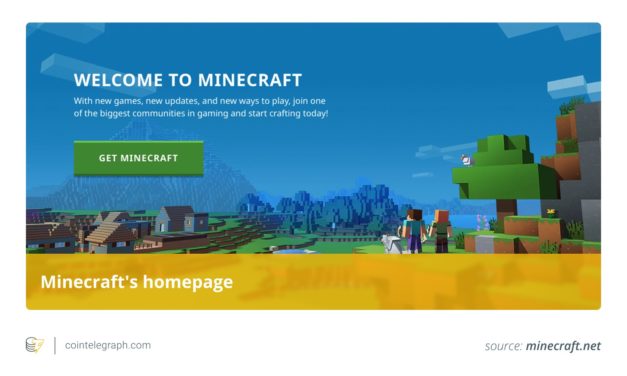What is P2P trading, and how does it work in peer-to-peer crypto exchanges?
What is peer-to-peer (P2P) trading?Peer-to-peer (P2P) trading is a type of cryptocurrency exchange method that allows traders to trade directly with one another without the need for a centralized third party to facilitate the transactions. Unlike traditional Bitcoin (BTC) exchanges, which typically have strict regulations and require users to go through a verification process before they can access and use the platform, P2P trading platforms tend to be much more relaxed in terms of their requirements.In P2P trading, you can select your preferred offer and trade directly with a counterparty rather than using an automated engine to execute your transactions. This means you have more freedom to pick the best rate and payment method for your needs—and with lower costs. You can also better safeguard your privacy because you’re dealing directly with a counterparty. Related: A beginner’s guide to cryptocurrency trading strategiesThese factors make P2P trading appealing to users looking for a more simple and straightforward way to trade cryptocurrencies.How does P2P crypto trading work?P2P trading platforms work by matching buyers and sellers together to facilitate a trade. The platform will typically take a small fee for each trade conducted, and also require users to store their funds in a separate digital wallet controlled by the platform. Because P2P exchanges link crypto purchasers and sellers, they’re sometimes compared to marketplaces like Craigslist or Facebook Marketplace. Typically, buyers and sellers can also browse crypto advertisements or create their own.Most P2P exchanges use a feedback or rating system to protect all participants in the transaction, providing a layer of protection for everyone involved. For example, if you meet someone on social media interested in buying Bitcoin and you’d like to sell, you can’t do so on social media as it wouldn’t be secure.It’s difficult to establish trust on platforms such as Facebook Marketplace or Twitter, for example, because they are not P2P platforms. You can’t be certain that the buyer will follow through with the payment for the Bitcoin after receiving it. On a P2P platform, however, you’ll have the advantage of being able to check their reputation and ratings before engaging in any transactions.Types of P2P networksTo better understand how P2P networks work, let’s take a quick look at the types of P2P networks. Outside of crypto trading P2P platforms, there are a variety of different P2P networks available, each with its own unique features and benefits:File-sharingFile-sharing networks are some of the most popular P2P networks. These platforms allow users to share files such as videos, music and books. Common examples are torrent sites where users can connect to each other and share files directly between their computers. While these networks are often used to illegally download copyrighted material, file-sharing P2P networks also have several legitimate uses.Telephony or VoIPP2P telephony networks allow users to connect with each other and make phone calls without the need for a central server or telephone company. VoIP (Voice over Internet Protocol) is another type of P2P telephony network that allows users to make calls and it also has features such as video conferencing and instant messaging.Media streamingMany popular streaming services rely on P2P technology to make their services work. For example, YouTube uses P2P streaming to deliver its content to users. Several other media services use the same method.Pros and cons of P2P crypto tradingAdvantagesThere are many advantages to using P2P crypto trading platforms, including:Multiple payment methodsBecause P2P crypto trading platforms simply connect buyers and sellers, they can provide a wide variety of different payment methods. This can include traditional payment methods, such as credit cards and PayPal, as well as digital currencies like Bitcoin, Ethereum (ETH), or Litecoin (LTC).Secure transactions P2P trading platforms often use security features such as encryption and two-factor authentication to protect trade. As a result, users can feel confident that their funds are safe when engaging in transactions on these networks.Exposes you to a global marketplace where you can buy and sell to users globallyThe global nature of P2P crypto trading allows users to work with anyone, regardless of location. This opens up a world of possibilities, as it allows you to trade in any currency or asset that you like.Restrictions do not apply even in nations with strict laws on crypto tradingBecause P2P crypto trading platforms don’t have a central authority, they can’t be shut down by governments with strict crypto laws. This includes regulations specific to certain countries that may restrict how much cryptocurrency you can buy or sell.Related: Cryptocurrency bill: Countries where cryptocurrency is restricted or illegalCommunity and customer supportMany P2P crypto trading platforms have a large community of users that discuss cryptocurrencies, news and trends in the industry. This allows you to get valuable advice and insight into how different coins are performing, positively influencing your investment decisions.Allows you to customize your offers with ad posting to attract sellersP2P platforms often have marketplaces where users can advertise their offers to others. In addition, many of these networks allow you to customize your offer with different features, such as discounts and payment terms. These customization options aren’t available on centralized exchanges and give you greater flexibility when trading cryptocurrencies.No trading fee or commissionsBecause P2P trading platforms connect sellers directly with buyers, they don’t charge any fees or commissions on transactions. This gives you the freedom to buy and sell currencies without worrying about extra costs impacting your bottom line.Great transaction speedThe transaction speed of P2P crypto trading platforms depends on the payment method used. For example, transactions made with credit cards are usually processed immediately. In contrast, those made via bank transfers may take a few days. Overall, though, the transaction speed is much faster than centralized exchanges.Flexible trade ordersP2P trading platforms allow you to set your own trade orders, giving you more control over your trades. You can set the price at which you’re willing to buy or sell, as well as the amount of currency you want to trade. This flexibility is not available on centralized exchanges, where the order book is managed by the exchange, itself.DisadvantagesLike all other networks, there are also some potential risks associated with using P2P crypto trading platforms. These include:Low liquidityP2P crypto trading platforms typically have lower liquidity than centralized exchanges. This means there may not always be someone available to match your trade order. As a result, you may have to wait longer to find a buyer or seller, which can, in turn, impact the price of the currency you’re trying to buy or sell.The risk of scamsBecause P2P crypto trading platforms don’t have a central authority, there’s a greater risk of scams. For example, users may create fake profiles or post false information to take advantage of other traders. It’s important to be aware of these risks and take steps to protect yourself by only dealing with trusted users and conducting thorough checks on potential sellers before making any transactions.Slow trading speedsAs with any trading platform, using P2P crypto trading platforms comes with certain risks. One of the main disadvantages is that the trading speeds can be quite slow, as one party may put off the transaction midway. This can lead to delays and frustrations when trying to buy or sell cryptocurrency and may impact your bottom line if the price of the currency moves in the meantime.How to initiate a P2P cryptocurrency exchangeTo initiate a P2P cryptocurrency exchange, you will first need to find a platform that suits your needs. There are several different P2P crypto trading platforms available, so it’s important to compare the features and fees of each before you decide on one.Once you’ve found a platform you’re happy with, you can create an account and deposit the currency you want to trade. Once your account is set up, you’ll be able to post offers to buy or sell cryptocurrencies. You can also browse offers from other users and trade directly with them.P2P crypto trading platforms do not have a central authority figure, so it’s important to take steps to protect yourself from scams and other potential risks. This may include conducting thorough checks on potential sellers, using strong passwords and two-factor authentication, and always using a secure connection when trading currencies online.Key features of a P2P platformThe key features you should look for in a P2P trading platform are:User-friendly interface: To help you find the cryptocurrencies you’re looking for easily and quickly as well as process and manage your trades, the platform should have an intuitive, user-friendly interface.Robust security: The exchange should have robust security features, such as multi-factor authentication and encrypted storage for your coins to help protect your data and funds.Reputation: To ensure that you’re dealing with a legitimate and trustworthy platform, it’s important to diligently research the exchange you’re considering using. This includes looking at user reviews and checking for any red flags.Supported currencies: When choosing a P2P exchange, ensure that it supports the cryptocurrencies you’re interested in buying or selling.Payment methods: The platform should offer a variety of payment methods to choose from, such as bank transfer, credit/debit card, or PayPal.Fees: Be sure to check the fees charged by the platform, as these can vary depending on the exchange. You may also be charged fees by your payment provider when using certain methods to fund your account.Customer support: It’s important to have access to customer support if and when you face problems with the platform or need help with a trade.Can P2P trading be more profitable than traditional exchanges? Many people believe that P2P crypto trading can be more profitable than traditional exchanges, as there is no centralized authority to dictate prices. As a result, peer-to-peer marketplaces can often offer better exchange rates and lower fees, which can help you maximize your profits when trading cryptocurrencies.In addition, P2P platforms tend to have higher liquidity than traditional exchanges due to the large number of traders using them. This means it’s easier to find buyers or sellers for your desired currency at any time. However, it’s important to do your research before choosing a platform and always exercise caution when making trades online.With careful research and due diligence, P2P crypto trading can be an effective way to buy or sell cryptocurrencies quickly and easily. Whether you’re looking to make a profit from price fluctuations or simply want more flexibility when trading digital currency, it’s worth considering the benefits of this growing market.
Čítaj viac






